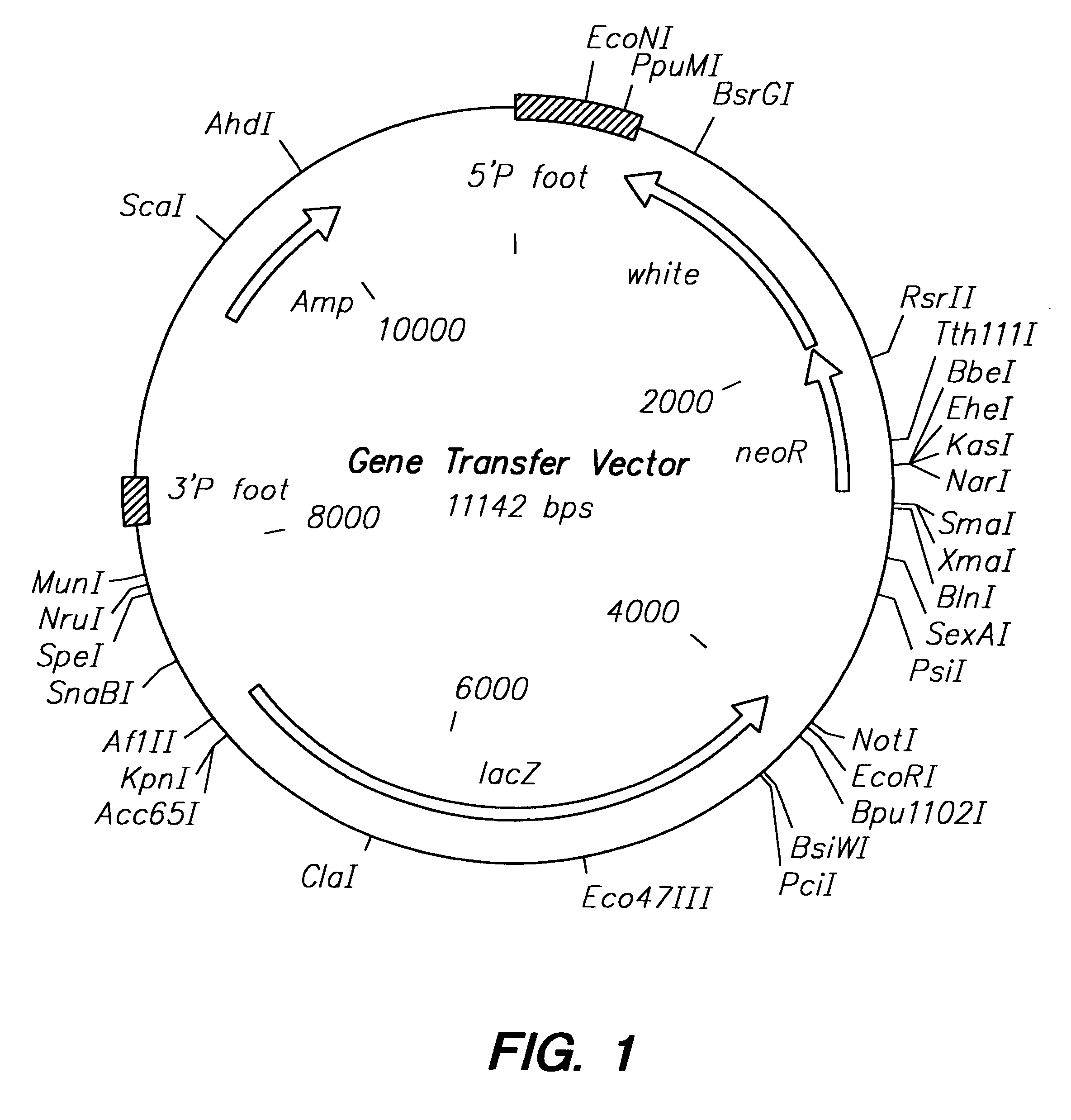P element derived vector and methods for its use
a vector and p element technology, applied in the field of nucleic acid vectors, can solve the problems of slow recombination events, insufficient homologous recombination based protocols, and insufficient use of optimal use in many situations
- Summary
- Abstract
- Description
- Claims
- Application Information
AI Technical Summary
Problems solved by technology
Method used
Image
Examples
Embodiment Construction
P element derived vectors and methods for their use in the insertion of an exogenous nucleic acid into the genome of a cell are provided. The subject vectors include two P element transposase recognized insertion sequences, e.g. P element derived 31 base pair inverted repeats, flanking at least two transcriptionally active genes. In the subject methods, a vector according to the invention that includes an exogenous nucleic acid is introduced into a target cell under conditions sufficient for insertion of the exogenous nucleic acid into the target cell genome to occur. The subject methods find use in a variety of different applications, including gene therapy applications. In further describing the subject invention, the subject vectors will be described first, followed by a discussion of the methods of using the subject vectors for transformation of a target cell.
Before the subject invention is described further, it is to be understood that the invention is not limited to the partic...
PUM
| Property | Measurement | Unit |
|---|---|---|
| weight | aaaaa | aaaaa |
| weight | aaaaa | aaaaa |
| weight | aaaaa | aaaaa |
Abstract
Description
Claims
Application Information
 Login to View More
Login to View More - R&D
- Intellectual Property
- Life Sciences
- Materials
- Tech Scout
- Unparalleled Data Quality
- Higher Quality Content
- 60% Fewer Hallucinations
Browse by: Latest US Patents, China's latest patents, Technical Efficacy Thesaurus, Application Domain, Technology Topic, Popular Technical Reports.
© 2025 PatSnap. All rights reserved.Legal|Privacy policy|Modern Slavery Act Transparency Statement|Sitemap|About US| Contact US: help@patsnap.com


